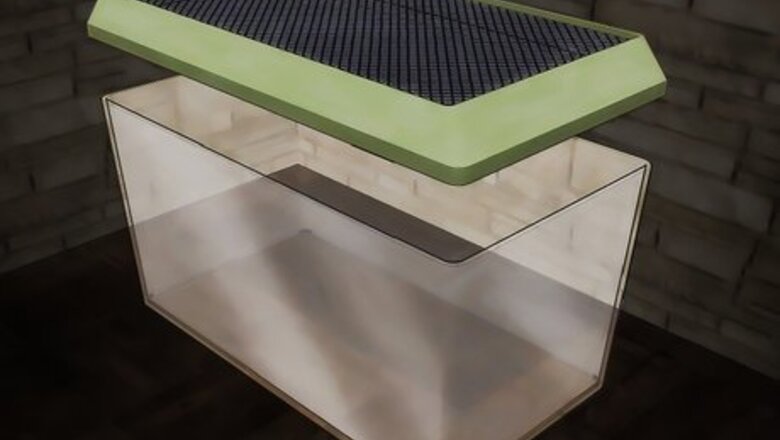
views
Housing Your Crickets

Buy a plastic cage. House your crickets in a plastic storage container. You can purchase a cricket cage from the pet store or you may use a Rubbermaid tub, garbage cab, aquarium, or an old plastic food container. Poke a hole in the top of the container to provide some ventilation. Use a smaller container if you have a few dozen crickets or less. If you have a larger number of crickets, you will need a garbage can or an aquarium-sized cage. The holes should be small enough for air to flow, but not big enough for your crickets to get out. Use a thumbtack to make small holes. You can also make a large hole in the top of the container and glue a mesh screen. Use a metal screen instead of fiberglass screen. Using a substrate is not recommended because it makes cleaning more difficult and produces more odor. However, if you do use substrate, sand, wood shavings, or coconut fiber is acceptable.
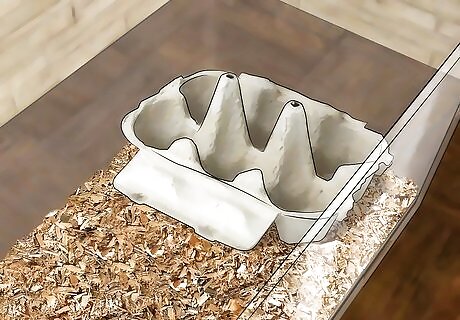
Place an old egg carton in the cage. Your crickets need space to climb and to get away from the other crickets. If they remain on top of each other, they can suffocate. Stack an egg crate either vertically or horizontally in the cage. Depending on the size of your cage, you may need to cut the egg crate so it will fit. You can also use old paper towel or toilet paper rolls instead of egg crates.
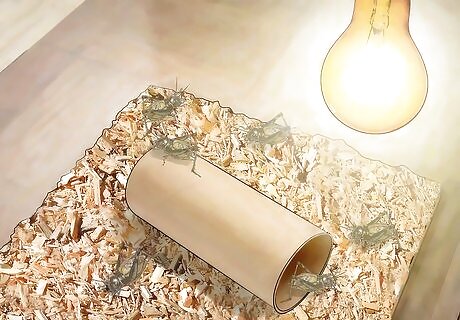
Keep the cage warm. Your crickets need a warm environment between 75°F - 85°F. You can use an incandescent bulb to provide heat. If you are trying to get smaller crickets (i.e. ½ inch or smaller) to grow, keep the temperature between 80°F - 90°F.
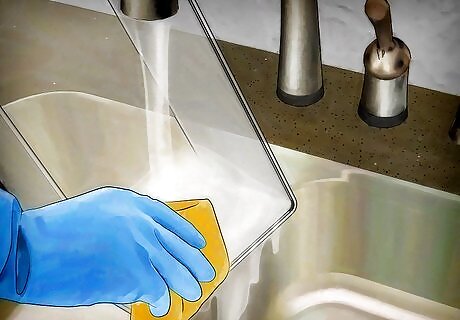
Clean the cage weekly. Remove dead crickets, casing, and waste every week. Dead crickets release toxins that will kill the live crickets. Crickets are very sensitive to any fumes or chemicals. You should also clean the cage every time you get a new shipment of crickets. Tilt the cage to one side and move the egg crates to the other end. Your crickets will stay on the egg crates. You can then remove anything you need to from the cage. If you need to clean the entire cage, remove the egg cartons and place them in another temporary container. Clean the cage with hot water and a mild soap/bleach solution. Rinse the cage out until you can no longer smell the soap/bleach mixture.
Feeding Your Crickets
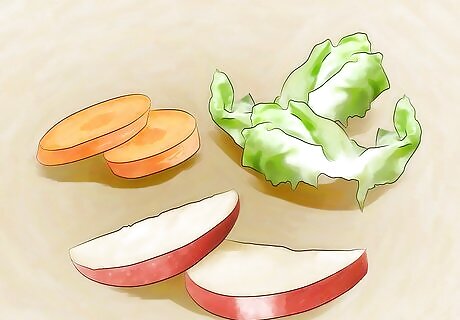
Give your crickets fresh fruits and vegetables. A healthy diet for your crickets will result in a healthy diet for your reptiles. Fresh fruits and vegetables are also a source of water for your crickets. The following foods are ideal for your crickets: Potatoes Carrots Greens such as romaine lettuce, collard greens, mustard greens, broccoli, and dandelion leaves Fruits such as apples, grapefruits, berries, mango, and papaya Avoid citrus, nightshade, banana, kale, iceberg lettuce, and watermelon
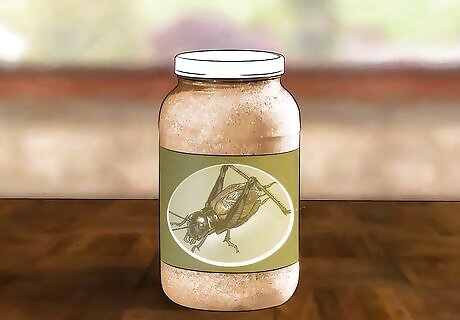
Give your crickets dry food. A healthy diet consists of both fresh foods and dry foods. Your crickets will eat almost anything that you give them, including their fellow crickets. It is important that you always have a food bowl in their cage. Nutritious dry food includes: Cricket chow Alfalfa Wheat Bran Seeds and nuts such as unsalted raw sunflower seeds, pumpkin seeds, almonds, and peanuts Crushed cat food, dog food, or chicken feed that is vegetable based
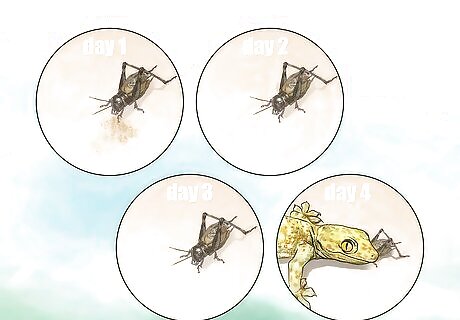
Gut load before feeding to your reptile. At least two days before you plan to feed the crickets to your reptile, feed them a mixture of all of the healthy foods that you have been giving them. Gut loading is different from regular feeding because you are giving them multiple foods at once. Gut loading makes sure that your reptile is getting the most nutritious cricket possible. Move the crickets that you plan to give to your reptile into a different container for gut loading.
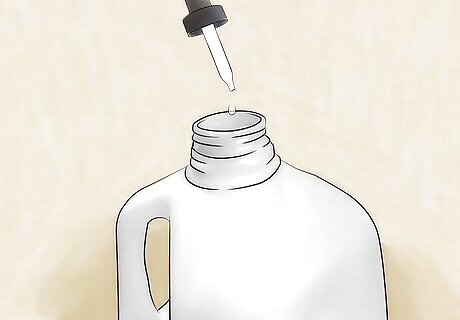
Dechlorinate the water. Only provide your crickets with dechlorinated water. You can purchase a dechlorinator from your local pet store for 5 or 10 bucks. It typically takes one or two drops of dechlorinator for every gallon of water. However always read the instructions. You can dechlorinate a gallon of water and keep it aside to give to your crickets. It should not take more than 5 minutes for the dechlorinator to work.
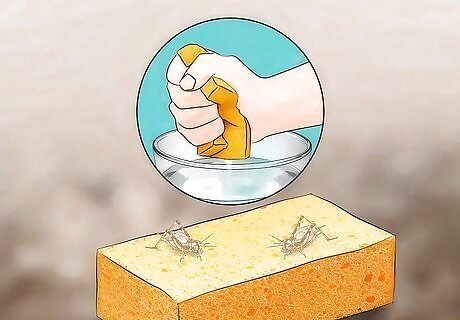
Provide water in a safe way. While your crickets need water, you must be careful and not drown them. Use a damp sponge, paper towel, cotton ball or fresh fruit as water sources. Do not use a water bowl or any other type of standing water. It does not take much for crickets to drown. You can also purchase a feeder cricket watering device. Check the water supply multiple times a week to make sure that it is still damp.
Keeping Them Alive
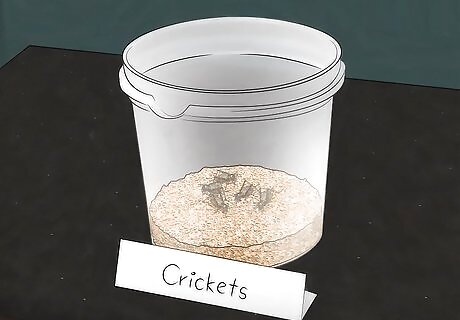
Buy crickets when they are young. Crickets have a short life span of 8-10 weeks. Try to buy young crickets so you can use them in time. When you purchase crickets, find out how old they are. The hotter you keep their cage, the shorter their lifespan. A temperature of 80°F - 90°F will cause your crickets to die more quickly. Try to keep it between 75°F - 80°F.
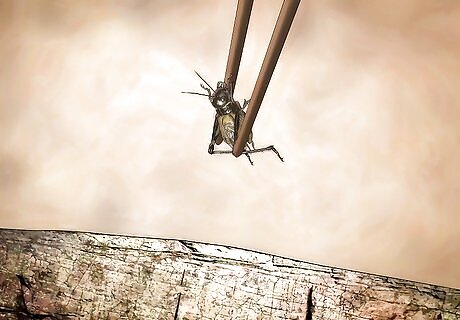
Keep their cage clean. If you do not clean your cricket cage regularly, your crickets will not last as long. Remove a cricket as soon as it dies. Also, remove any uneaten food before it begins to rot. If you find that your crickets are not living for very long, you may need to clean more often.
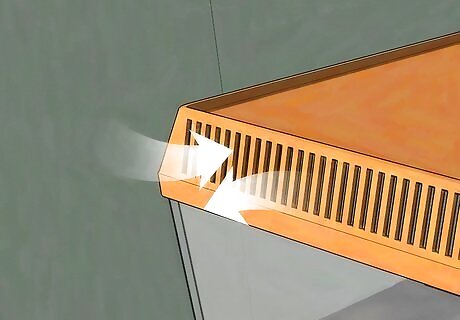
Provide adequate ventilation. A screen top is best for your cricket cage. If you are poking holes in your plastic lid, you will have to poke a ton of holes. The holes should cover the entire area of the lid. If your crickets are not living very long, poke more holes or switch to a metal screen. Your crickets will not get enough air if they are too crowded in their space either. Use egg cartons and make sure that you have a large enough cage.

Use a safe water source. Apples are great as a water source for your crickets. If you do use a water dish, only fill it with ¼ inch of water. Also place a sponge in the water dish so that your crickets can easily climb out of the dish.
Breeding Crickets
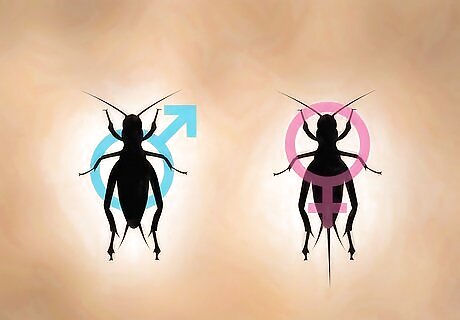
Recognize the difference between male and female crickets. You can easily tell the difference between adult female and adult male crickets. Female crickets have an ovipositor (egg-laying appendage) that extends from their rear and smooth wings. Male crickets have ridges on their wings and use these ridges to make a chirping sound when they are trying to mate. It is difficult to tell the difference between males and females when the crickets are young. Breeding is not difficult with adult crickets.
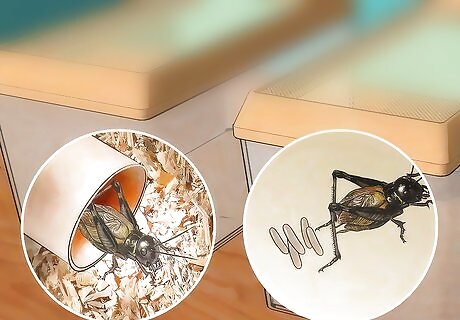
Have a separate container for egg laying. One container should be exclusively for breeding. Place substrate (e.g. moist sand, soil, coconut husk; damp cotton wool or paper towels) in a plastic tub. The substrate gives the female crickets a place to burrow before they deposit their eggs. Remove the container once eggs have been laid. You can also place one pint (500 ml) of nesting material on top of an egg carton for burrowing as well. The nesting container should be 2-3 inches deep so the eggs will not be disturbed. Check the nesting material every 2 or 3 days to make sure that it has not become dry. You should see eggs in 4-7 days.
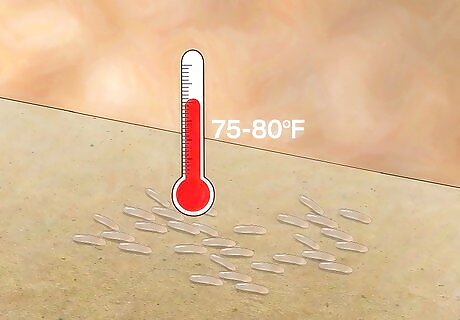
Allow eggs to incubate. Eggs are a whitish yellow color. Once they have been laid, move them to a different container that is between 75 and 80 degrees Fahrenheit. If the substrate stays moist, the eggs should hatch in about 10 days. Once the eggs hatch, move them to a rearing container. If the substrate dries out, your eggs will not hatch.
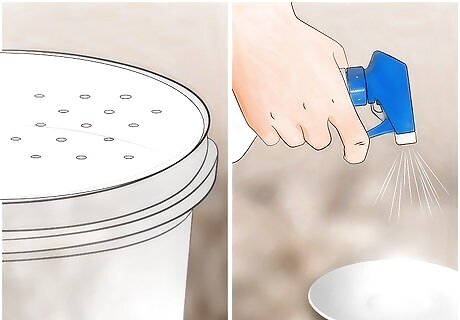
Take care of the baby crickets. The rearing container should have small holes in the lid that are 1 inch apart. Place a water dish in the container and spray it with water every two days. Watch this container more carefully than you watch the breeding container. Keep the crickets in this container until they are a ½ inch long. Once they are a ½ inch long, you can feed them to your reptile. For breeding purposes, move some of the crickets to the breeding container when they are ¼ inch long. Adult crickets only live for a few weeks, and you will miss out on the breeding period if you do not set them aside.
















Comments
0 comment